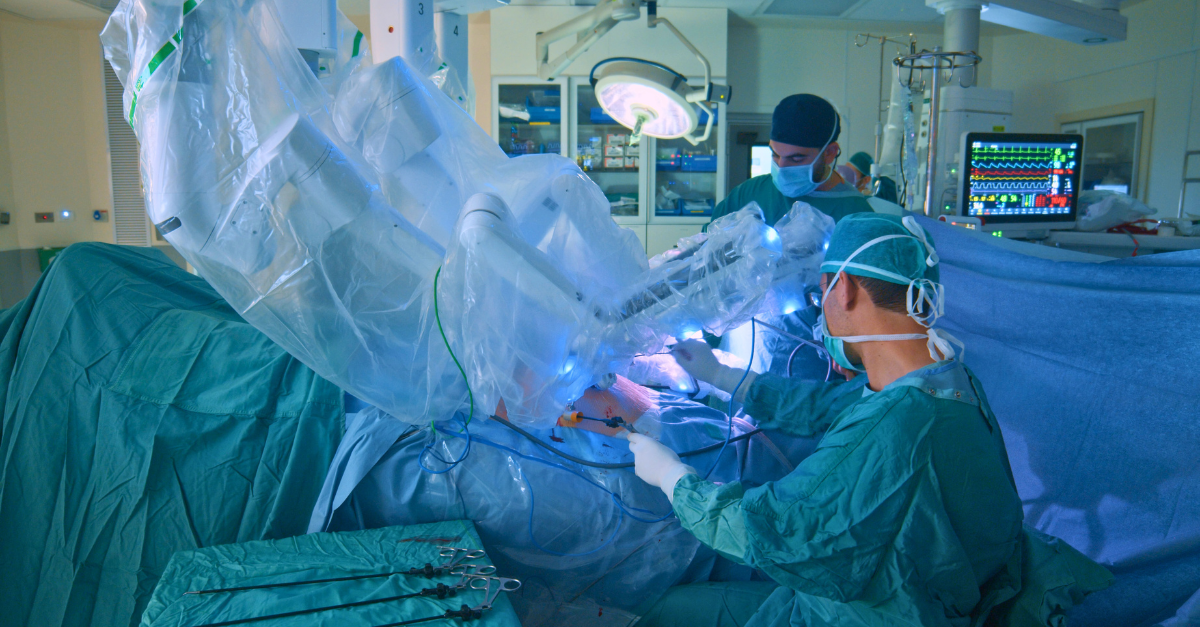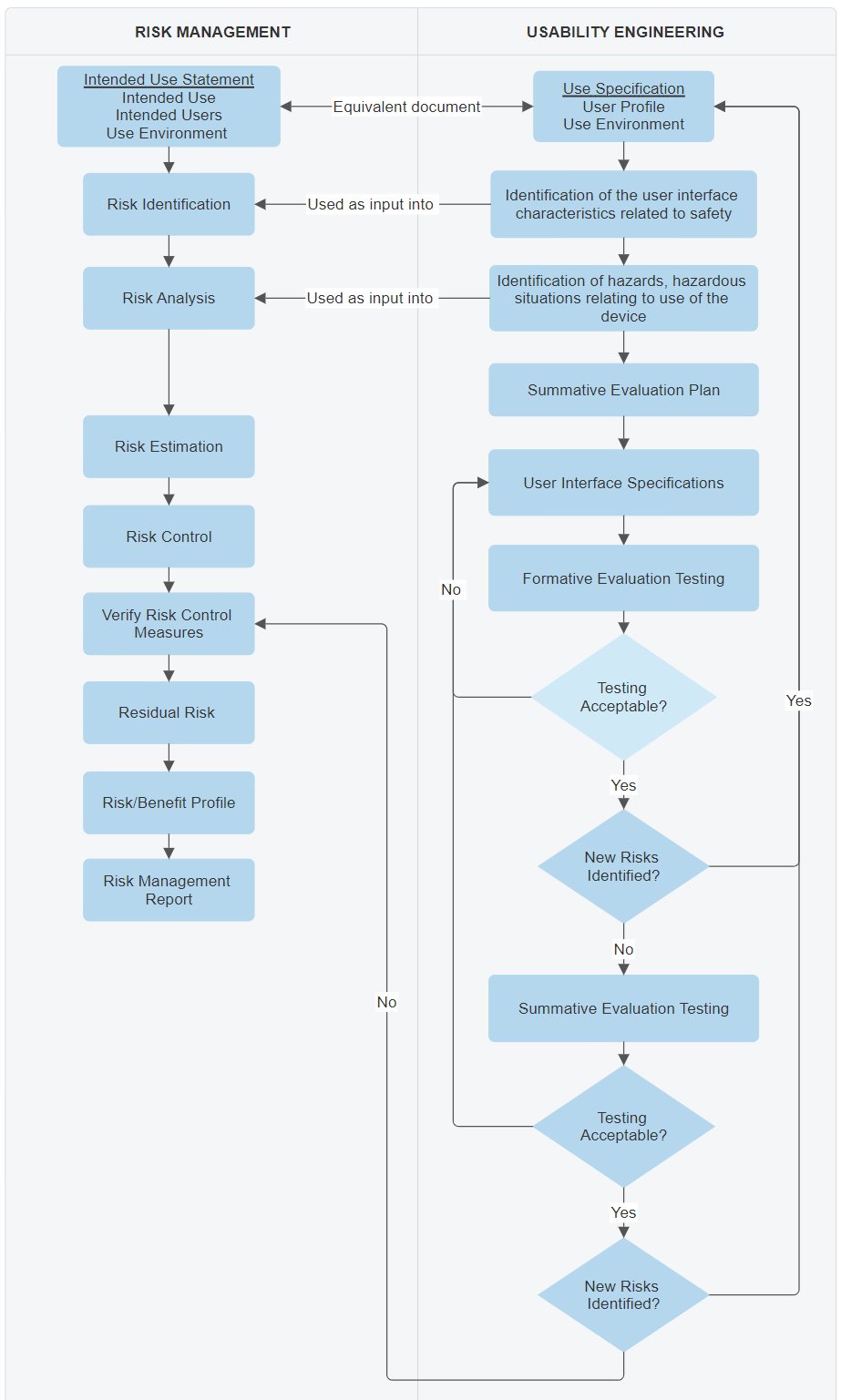As medical devices become more sophisticated, adaptable to technological advances and accessible to the public, it is critical that companies ensure they have developed a robust program of usability engineering, to minimize the risk of incorrect usage, and create devices that are easy to use, intuitive and safe.
When manufacturers implement a risk management process through ISO 14971, they are ensuring that risk control measures are in place, and the device is safe to use.
But, when a risk mitigation measure involves the use of labelling, or safety information, regulators will want to see evidence that the risk mitigation measure is effective. How do you demonstrate this? – Usability Engineering.
ISO 62366 Part 1: Application of usability engineering to medical devices is the international standard published to provide companies with a framework for developing a usability engineering program during the device’s development.
To ensure compliance with this standard, companies must develop and maintain a usability engineering file for their device. This file contains details of all user interfaces for the device, how they are tested to ensure safety and how they have been integrated into a risk management program.

What elements of a device are related to safety and correct use?
- Check the ISO 14971 risk management file – risk analysis, and control measures.
- When information for safety is used as a risk control measure, the manufacturer must subject that information to the usability engineering process, to determine that the information:
- Is perceivable and understandable by the user of the device and supports the correct use of the device.
- When information for safety is used as a risk control measure, the manufacturer must subject that information to the usability engineering process, to determine that the information:
- Define all of the device user interfaces, and the hazards that are associated with each.
- All elements of interaction between the device and the user are called user interfaces. These interfaces should include consideration of both the hardware and software components. ISO 62366 considers the user interface to include the following:
- Cables, tubing and connectors
- Accessories
- Handles
- Work surfaces
- Markings and labels
- Video displays
- Push buttons
- Touch screens
- Voice recognition
- Keyboard and mouse
- Haptic controls
- Auditory, vibratory, tactile and visual signs
- Force that needs to be applied
- Any other element that requires manual manipulation
- All elements of interaction between the device and the user are called user interfaces. These interfaces should include consideration of both the hardware and software components. ISO 62366 considers the user interface to include the following:
What are the contents of a Usability Engineering File?
The usability engineering file can either be a standalone file, or be integrated into the risk management file for the device, and other QMS records. However, it is essential that as a minimum, a traceability record exists that details the names and locations of each document that makes up a Usability Engineering File.
The contents of the file include:
- User Interface Evaluation Plan
- A plan written during design and development which outlines how each user interface will be distilled into User Interface Specifications and how the requirements will be tested, verified, and reported.
- User Interface Specifications
- For each user interface, a specification is required that details the requirements of the interface in way that can be tested to verify that the requirements have been met.
- Formative Evaluation
- Plan: What test methods are to be used – what parts of the interface are being tested, and when are the tests being performed throughout the design and development of the product.
- Testing: Results of testing, what new use errors or hazards are identified during the testing, and then how they are added to risk analysis.
- Summative Evaluation
- Plan: For each hazard related scenario identified in the risk analysis – what test method will be used to verify the risk control measure, and justification for this method. What part of the user interface will be tested, and what criteria will be used to determine if the information is perceivable, understandable and supports the correct use of the device.
- Testing: Results of testing, what new use errors or hazards were identified during the testing, and a summary that confirms the safety measures implemented are effective.
Every time a new use error, hazard, hazardous situation or other use scenario is identified, it is included in the usability engineering process, and the testing is repeated.
The diagram below shows how the information gathered in the risk management file is part of the usability engineering file, and likewise, how the outputs of the usability engineering processes are used as inputs to the risk management process.
Because the outputs of the Usability Engineering process are considered inputs to the Risk management process, and are verified during Design Development, the UE process should begin at the start of any device development program when user needs are being considered, Elements will run parallel to the design and development process, therefore consideration of Usability Engineering must be included at all stages of development.

How should Usability be tested?
Conducting the evaluation of user interfaces will heavily depend on the type of medical device being developed, the user groups, and the hazards that have been identified.
Consider at a minimum:
- Functional analysis of the device and its user interface
- Design audits
- Validation
- Questionnaires
- Cognitive walkthroughs
- Simulated clinical or field testing
When planning and performing evaluations of the user interface, consider the following:
- Is a thorough, detailed evaluation plan in place that outlines what tests or protocols will be performed?
- Is the test method supported by a scientific or statistical justification?
- Will the output of the test directly verify that the user interface specification has been met?
- Have all user groups been included in testing?
- For software, have all user profiles been tested?
Where are the results of Usability Engineering reported?
During the design and development of a new device, where Usability Engineering has been performed throughout the development phases, the reporting of each stage is normally included in the Risk Management File for the device.
The verification testing performed to demonstrate that safety instructions in the labelling have been understood will be a key component in the both the Risk Management File and the Technical File to demonstrate that the device has been manufactured in accordance with the Essential Principles.
As with any device design and development process, a lifecycle approach is applied to usability engineering.
While an initial evaluation report and verification of safety information is required at the beginning of a device’s product realisation lifecycle, it requires continuous monitoring and reporting to ensure that the information being gathered from post-production feedback, safety reporting and risk management remains relevant and up to date.
Where changes to a device are made throughout its lifecycle, usability engineering must always be considered as part of the risk management process to ensure that any new interfaces are included in hazards analysis and subsequent verification testing, or where updates to labelling information have been made, that testing has been performed to verify that important safety information is understood by the user.
Who is responsible for performing Usability Engineering work?
Because Usability Engineering is an integral part of both the risk management process and Design & Development, it is a cross-functional requirement. A UE Team should be identified, that includes both product development and Quality.
It is important that people who are appropriately trained in risk analysis and evaluation are included in any team and that a member of the team is also appropriately experienced with the use of the device from the perspective of the intended user.
In summary, while the requirements of a good usability engineering process will be closely linked to Risk Management and look the same for many aspects, it is important to understand that it is not simply an information gathering exercise to meet a regulatory requirement.
The purpose of integrating UE into the product realisation lifecycle is to ensure that the device being developed can actually be used safely in a real-world setting.
The intended user of a device is not generally someone within the company, and they will not have the in-depth understanding of a device in the same way that the product development team will. So testing the device and its labelling by the intended user is proof that while a risk management process is in place, that it is actually driving an outcome and preventing user errors, and creating a device that is safe and effective.
Contact us if you're looking for support in the medical device space for the ISO 62366 Standards or other Standards such as ISO 13485 (Medical Device Quality Management System Requirements) and ISO 14971 (Risk Management for Medical Devices).
